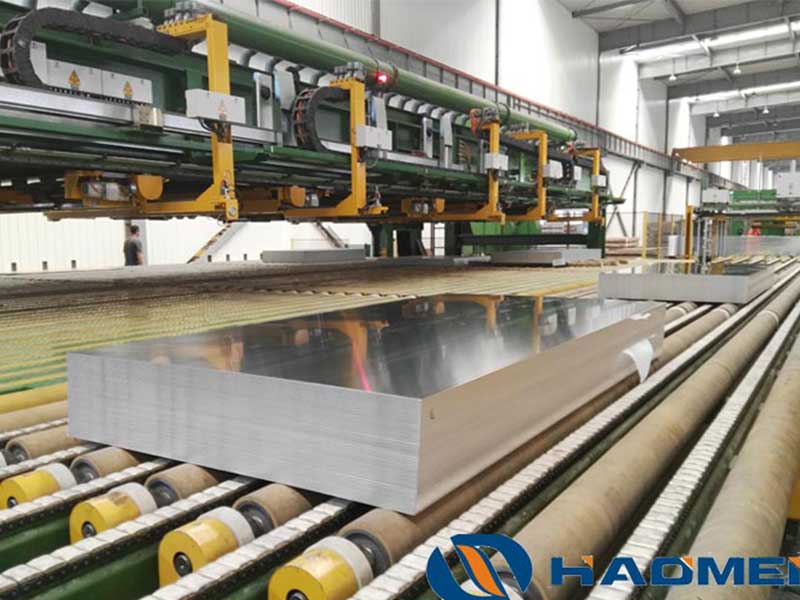Sheet of aluminum aluminium plate
In today's advanced industrial landscape, the sheet of aluminum, also commonly referred to as the aluminium plate, is indispensable across various sectors. While seemingly simple in form, these aluminum plates possess an intricate balance of properties engineered to deliver superior functionality. A fresh perspective into their functions, applications, and technical nuances reveals why aluminum plates stand as a backbone material for industries ranging from aerospace to construction.
Unveiling the Functions of Aluminum Plates
At its core, an aluminum sheet or plate serves as a flat metal component, usually available in thicknesses starting at 0.2 mm for sheets and greater than 6 mm for plates, designed for structural and functional use. The primary function hinges on its lightweight strength, which enables manufacturers to optimize designs where weight reduction is critical, such as in transportation.
functional attributes include:
- Corrosion resistance: A natural oxide layer on aluminum imparts resistance against rust and environmental damage.
- Thermal and electrical conductivity: Aluminum plates are excellent conductors, making them ideal in heat exchangers and electrical applications.
- Formability and weldability: These sheets can be mechanically worked into complex shapes and welded with ease, broadening fabrication prospects.
- Reflectivity: Their high reflectance against both visible light and heat makes them useful for building materials and lighting fixtures.
Applications Explained: The Roots of Versatility
Across multiple domains, aluminum plates replace heavier or less durable materials owing to these inherent advantages:
- Transportation: Aluminum plates contribute to lighter vehicles, fuel efficiency, and reduced emissions in aircraft, ships, trains, and automobiles.
- Construction: Used in architectural facades, roofing sheets, and window frames, these plates enhance durability while reducing support structure weight.
- Industrial Machinery: Structural frames and machine parts crafted from aluminum plates resist wear while permitting custom configurations.
- Electrical Engineering: Lightweight bus bars and heat sinks utilize the conductivity and thermal performance of aluminum.
- Food Industry & Packaging: The non-toxic and corrosion-resistant properties support hygienic applications like equipment panels or durable packaging liners.
Technical Parameters: Making Sense of Standards & Composition
The performance of aluminum sheets and plates strictly depends on alloy type, temper, thickness, and compliance with technical standards. The aluminum world operates mostly under international ANSI, ASTM and ISO standards such as ASTM B209 and EN 573.
Thickness / Size:
- Sheets generally ≤ 6 mm thickness.
- Plates generally > 6 mm thickness.
- Lengths and widths vary widely, typically up to several meters.
Alloy Classifications:Aluminum alloys are categorized primarily into wrought (series 1xxx, 2xxx, 3xxx, 4xxx, 5xxx, 6xxx, 7xxx) where each unlocks different balance points between strength, corrosion, and formability:
| Alloy Series | Main Alloying Element | Characteristics |
|---|---|---|
| 1xxx | 99% Aluminum purity | Excellent corrosion resistance, electrical conductivity |
| 2xxx | Copper | High strength, limited corrosion resistance |
| 3xxx | Manganese | Good corrosion resistance, good formability |
| 5xxx | Magnesium | High corrosion resistance, marine applications |
| 6xxx | Magnesium, Silicon | Good strength and corrosion resistance, weldable |
| 7xxx | Zinc | Very high strength, aerospace uses |
Temper Designations:The temper of aluminum defines its mechanical properties and makes the metal suitable for specific use cases. Typical tempers include:
- O Temper: Fully annealed, best ductility.
- H Temper: Strain-hardened (H14 - half hard, H32 - strain-hardened and partially annealed).
- T Temper: Heat treated for higher strength (example: T6).
Chemical Properties / Composition of a Typical 6061 Alloy:
| Element | Percentage (%) |
|---|---|
| Aluminum (Al) | Balance |
| Magnesium (Mg) | 0.8 - 1.2 |
| Silicon (Si) | 0.4 - 0.8 |
| Iron (Fe) | 0.7 (max) |
| Copper (Cu) | 0.15 - 0.4 |
| Chromium (Cr) | 0.04 - 0.35 |
| Zinc (Zn) | 0.25 (max) |
| Manganese (Mn) | 0.15 (max) |
Such alloy instructions emphasize the balance of conductivity, durability, and machinability pertaining to its applications.
Implementation Standards: Conformity Towards Quality
Compliance with standards such as:
- ASTM B209: For aluminum and aluminum-alloy sheet and plate.
- EN 485: Aluminum and aluminum alloys—sheet, strip, and plate—mechanical properties.
- ISO 6361: Specifications for the Sheet, Strip and Plate products.
manufacturers guarantee consistency in mechanical performance (yield strength, tensile strength), dimensional accuracy, and surface quality (roll finish, mill finish).
Typical Mechanical Parameters of 6061-T6 Aluminum Plate:
| Property | Value |
|---|---|
| Tensile Strength | ≥ 310 MPa |
| Yield Strength (0.2%) | ≥ 275 MPa |
| Elongation at Break | ≥ 12% |
| Hardness (Brinell) | 95-105 HB |
The sheet of aluminum/aluminium plate bridges diverse design philosophies — marrying strength with lightweight efficiency, corrosion endurance, and formability with conductivity. Each specification anchors it to user needs shaped by industry norms and innovative demands. By harmonizing metallurgical insights like alloy composition and temper with customer-driven standards, aluminum plates remain irreplaceable in advancing modern technology with environmental and economic advantages.
If you are seeking to adopt aluminum plate materials, these technical nuances and implementation standards empowers smarter, optimized, and resilient manufacturing outcomes—keeping your project both sustainable and technically superior.
https://www.alusheets.com/a/sheet-of-aluminum-aluminium-plate.html





